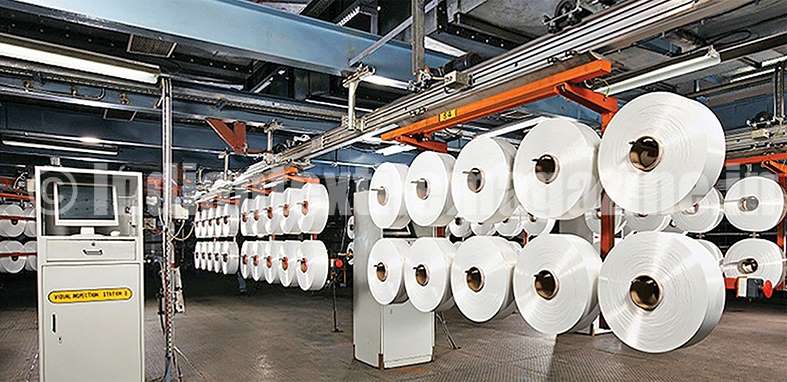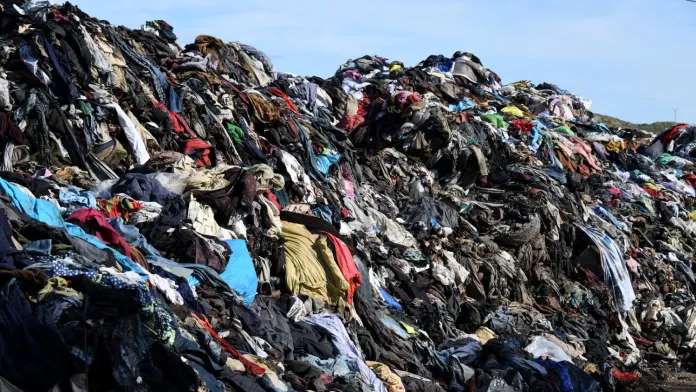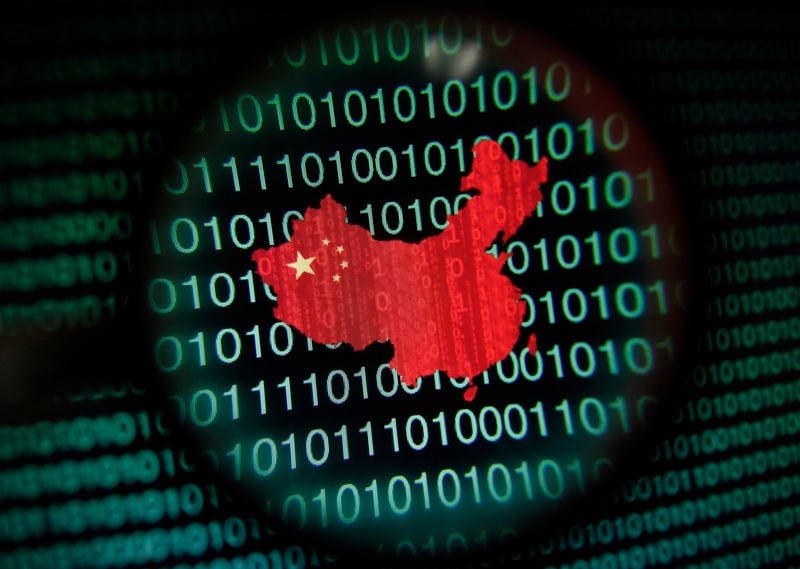FW

India's polyester industry, a significant contributor to the nation's textile sector, is passing through a complex landscape with fluctuating raw material prices, a growing domestic demand, and reliance on imports to bridge the supply gap.
Domestic demand
India's burgeoning middle class and rising disposable incomes have resulted in consistent demand growth for polyester products. This translates into a robust appetite for MEG (mono-ethylene glycol) and PTA (purified terephthalic acid), the key raw materials for polyester production, in India. While precise figures for domestic demand by volume are challenging to obtain, industry estimates suggest a steady annual growth rate of 6-8 per cent in recent years. This growth is driven by increased consumption of polyester fibers in apparel, home textiles, and industrial applications.
Domestic production and supply
Despite being a major polyester producer, India's domestic production of MEG and PTA falls short of meeting the surging demand. Reliance Industries (RIL) dominates the domestic production landscape, with a significant share of the market. However, other players like JBF Petrochemicals and MCPI also contribute to the supply chain.
|
Year |
MEG Production |
PTA Production |
|
2021 |
1,200 |
3,500 |
|
2022 |
1,300 |
3,800 |
|
2023 |
1,400 |
4,100 |
Source: Industry estimates and company reports
The deficit between domestic production and demand necessitates significant imports of MEG and PTA. India primarily imports these raw materials from countries like China, Taiwan, South Korea, and the Middle East.
Table: Estimated MEG and PTA imports (in metric tons)
|
Year |
MEG imports |
PTA imports |
|
2021 |
800 |
1,000 |
|
2022 |
900 |
1,200 |
|
2023 |
1,000 |
1,400 |
Price disparity
The price gap between imported and domestically produced MEG and PTA is a critical factor influencing the industry's profitability. While domestic prices are often influenced by local market dynamics and government policies, import prices are subject to global supply and demand forces, currency fluctuations, and freight costs.
Table: Average prices in Rs
|
Raw material |
Domestic price |
Import price |
|
MEG |
55-60 |
50-55 |
|
PTA |
80-85 |
75-80 |
This price difference, though seemingly small, can significantly impact the margins of polyester manufacturers, especially in a competitive market.
The polyester industry faces several challenges like volatile crude oil prices (which impact raw material costs), fluctuating import prices, and logistical bottlenecks. However, the government's focus on promoting domestic manufacturing and initiatives like the Production Linked Incentive (PLI) scheme offer hope. These measures are expected to boost domestic production and reduce reliance on imports in the long run.
Overall, the MEG and PTA scenario in India is mix of domestic production, imports, and price fluctuations. While the industry currently relies on imports to meet its raw material needs, efforts to boost domestic production are underway. The success of these initiatives will be crucial in determining the future trajectory of India's polyester industry.

Global fiber production increased to unprecedented levels in 2023, reaching a historic peak of 124 million tons, marking a 7per cent increase from the previous year reveals Textile Exchange's latest Materials Market Report. This growth indicates a doubling of production since 2000, with projections suggesting a further rise to 160 million tons by 2030.
Dominance of synthetics raises sustainability concerns
Virgin fossil-based synthetics, notably polyester, continue to dominate the market with a staggering 60.5per cent share, amounting to 75 million tons in 2023 alone. This dominance underscores concerns over the environmental impact of non-renewable resources and their implications for sustainability goals.
Table: Global fiber production in 2023
|
Fiber type |
Production (mn tons) |
Market share in % |
Notes |
|
Virgin Fossil-Based Synthetics |
75 |
60.5 |
Polyester: 57% |
|
Plant-Based Fibers |
31 |
25 |
Cotton: 20% |
|
Manmade Cellulosic Fibers (MMCF) |
7.9 |
6.4 |
|
|
Animal-Based Fibers |
1.3 |
1 |
Certified mohair & cashmere: 47% market share each |
|
Recycled Fibers |
9.8 |
7.9 |
Recycled polyester: 12.5% market share |
|
Total |
124 |
100 |
The table shows despite growing calls for sustainability, recycled fibers faced setbacks in market penetration. Recycled polyester, for instance, saw its market share dip to 12.5per cent, highlighting the economic challenges posed by cheaper virgin synthetics and current limitations in recycling technologies.
While cotton production experienced a slight decline, sustainable practices maintained a stable 29per cent share of the market. Conversely, certified wool, mohair, and cashmere demonstrated positive growth, reflecting consumer preference for responsibly sourced animal-based fibers.
Emerging trends in Manmade Cellulosic Fibers
Manmade cellulosic fibers (MMCF) showed promising growth, with 6.4per cent of the market share in 2023. This trend signals a potential shift towards more sustainable alternatives within the fiber industry.
There are several reasons for this shift. Lower price of virgin synthetics compared to recycled alternatives and natural fibers remains a significant barrier to sustainable sourcing. Then there are technological limitations as current recycling technologies are not advanced enough to handle the complexities of textile-to-textile recycling at scale, hindering the growth of recycled fiber market.
While consumer awareness of sustainability is growing, it hasn't translated into widespread demand for eco-friendly products that can incentivize large-scale shifts in production practices. And there is a lack of policy support. Policies and regulations that incentivize sustainable fiber production and recycling are crucial but currently lacking in many regions.
Industry experts emphasize the urgent need for transformative action. Claire Bergkamp, CEO, Textile Exchange, underscores the critical gap between sustainability aspirations and current industry practices. The report serves as a clarion call for intensified efforts in textile-to-textile recycling, technological innovation, policy support, and consumer education to drive meaningful change.
The 2023 Materials Market Report paints a complex picture of the global fiber landscape, highlighting both progress and challenges. As the industry navigates towards a more sustainable future, overcoming barriers to recycled fiber adoption and supporting transitions to preferred materials will be pivotal in mitigating environmental impact and meeting climate targets.

On September 28, in a landmark move towards environmental sustainability, California governor Gavin Newsom signed Senate Bill 707, the Responsible Textile Recovery Act of 2024, into law. This legislation establishes the nation's first extended producer responsibility (EPR) program for textile recycling, aiming to curb the growing issue of textile waste and its environmental impact.
All about the Act
The Act mandates apparel and textile producers take responsibility for the entire lifecycle of their products, including repair, recycling, and reuse. This means producers will be required to join a producer responsibility organization (PRO) and submit a plan to the Department of Resources Recycling and Recovery (CalRecycle) for the collection, transportation, and processing of textile waste. The program is set to be implemented by January 1, 2028, with convenient drop-off locations for used textiles to be established across the state.
The fashion industry is a major contributor to global carbon emissions and pollution. The Responsible Textile Recovery Act of 2024 specifically addresses the environmental impact of fast fashion and the throwaway culture it has given rise to. By holding producers accountable for the end-of-life management of their products, the law aims to promote a more sustainable and responsible approach to textile production and consumption.
Act’s impact on market and supply chain
This legislation is expected to have a significant impact on the textile industry, both within California and potentially nationwide:
Reduced landfill waste: By promoting textile recycling and reuse, the law aims to drastically reduce the amount of textile waste ending up in landfills, which currently stands at approximately 1.2 million tons annually in California alone.
Circular economy: The Act encourages a shift towards a circular economy for textiles, where materials are kept in use for as long as possible, reducing the need for virgin resources and minimizing environmental impact.
Innovation and investment: The legislation is expected to drive innovation in textile recycling technologies and infrastructure, creating new opportunities for businesses and potentially boosting job creation.
Supply chain changes: Apparel and textile producers will need to adapt their supply chains to incorporate end-of-life management of their products, potentially leading to increased costs and logistical challenges. However, it could also incentivize more sustainable production practices and the use of recycled materials.
Consumer awareness: The establishment of widespread textile drop-off locations and public awareness campaigns are likely to increase consumer awareness about textile waste and encourage responsible disposal and recycling practices.
With this legislation, California is setting a precedent for other states and countries to follow in tackling the growing problem of textile waste. The Responsible Textile Recovery Act of 2024 represents a significant step towards a more sustainable future for the textile industry and the environment.
However, some industry stakeholders have raised concerns about the potential costs and logistical challenges associated with implementing the new requirements. Therefore, the success of the program will depend on effective collaboration between producers, recyclers, and consumers.
Ministry of Textiles recently organised a roadshow in Coimbatore to promote India’s largest global textile exhibition, Bharat Tex 2025.
Attended by Rachna Shah, Secretary, Ministry of Textiles as the Chief Guest, the roadshow also witnessed the presence of other dignitaries including Arun Roy, Industries Secretary, Government of Tamil Nadu; Rajiv Saxena, Joint Secretary, Ministry of Textiles, Governemnt of India, Bhadresh Dodhia, Co-Chairman, Bharat Tex; A Shakhtivel, Hon Chairman, Tiruppur Exporters Association, etc.
Scheduled to be held from Feb 14-17, 2025 at Bharat Mandapam in New Delhi, Bharat Tex 2025 aims to showcase India’s capabilities in textile manufacturing, covering the entire value chain from raw materials to finished products.
To be organised by 12 Indian Textile Export Promotion Councils (EPCs) and supported by the Ministry of Textiles, the event will help attract global attention to India as a premier textile sourcing destination.
The previous edition of Bharat Tex was attended by over 3,500 exhibitors and 3,000 buyers from over 100 countries. On the other hand, over 5,000 exhibitors are expected to attend the upcoming 2025 edition along with more than 6,000 international buyers, and over 120,000 visitors at a venue of spanning across more than 220,000 sq m.
Rajkumar, Past Chairman, CITI, has requested the organisers to reduce participation fees for MSMEs like the Powerloom sector besides accelerate implementation of the Powertex program.
Highlighting the importance of the event in strengthening India’s position as a global textile hub, Shah commended government initiatives such as the Production Linked Incentive (PLI) Scheme and PM Mitra Parks Scheme, for their role in modernising India's textile sector. These initiatives will help generate Rs 25,000 crore in investment under the PLI scheme and Rs 70,000 crore under the PM Mitra scheme, creating approximately 20 lakh jobs in the coming years, she said.
The event will also play a crucial role in promoting India as a favored destination for textile sourcing globally, she added.
Textile products weighing 9,500 tons and worth $23.5 million in value were exported by Iran during the first six months of the current Iranian calendar year, from Mar 20-Sep 21, 2024, as per data from the Islamic Republic of Iran Customs Administration (IRICA).
The data shows, Iran registered a 7 per cent rise in the value of its textile exports and 8 per cent growth in the volume of textile shipments during this period compared to the same period last year. Over the years, Iran has made significant improvements in the quality of textile exports to meet rising global demand.
Advancing textile exports is a part of Iran’s broader strategy to diversify its economy and reduce dependence on oil revenues. By strengthening its textile sector, the country aims to boost foreign exchange earnings and create more job opportunities in labor-intensive industries. Encompassing fabrics, garments, and related products, the textile sector continues to be one of the country's key non-oil export contributors.
To boost Iran’s position in the global textile market, Iranian authorities encourage manufacturers to enhance its production efficiency and product quality. The country continues to modernise production processes and foster stronger trade relationships to continue expanding its textile exports in the coming years.
The Telangana Government plans to set up a Yarn Depot for the power loom sector at Vemulawada in the Rajanna Sircilla District.
A proposal for the establishment of this Yarn Depot was first initiated by Commissioner of Handlooms & Textile and Apparel Exports Parks, Hyderabad.
The government will set up this Yarn Depot with an investment of Rs 50 crore, with most of this fund being used for procurement and maintenance of the required yarn as buffer stock at the depot. Telangana State Handloom Weavers Society Cooperative (TGSCO) will act as the nodal agency for this project.
Shailaja Ramaiyer, Principal Secretary (Handlooms, Textiles & Handicrafts), Department of Industries and Commerce, Government of Telangana, states, permission for the establishment of this Yarn Dept has been granted after a careful examination of the proposal. A corpus fund of Rs 50 crore to run the Yarn Depot has also been sanctioned under Special B.C Welfare Budget.
Valued at $174.79 billion in 2023, the global woolen textiles market is projected to reach a value of $236.28 billion by 2032, growing at an expected CAGR of 4.4 per cent during the forecast period.
As per a study by Archive Market Research (AMR), woolen textiles encompass fabrics and material that is woolen or spun from wool, which is mainly procured from the sheep. Woolen textiles are known to be flexible, insulation-free, soft natured, durable and possessing the ability to absorb or repel moisture. Some of the products made from this material include sweaters, coats, scarfs, blankets, upholstery and carpets. It covers fashion accessories and home furnishing commodities.
As per the AMR study, some of the emerging trends in the woolen textiles market include an increasing concern for sustainability and responsible sourcing of the wool, innovations in material processing to make it softer and more versatile, and increasing the consumption of greens and natural textiles in the fashion industry. The industry also benefits from the 'luxury-consumer' or 'high-end' apparel consumers as well as the demands for permanent detailed fabrics in luxury and casual wears.
The AMR study classifies the global woolen textiles market into three product-based categories: Woolen Apparel, Woolen Blankets, Woolen Carpets. The report concludes with in-depth analysis of the business operations and financial structure of leading vendors in the Global Woolen Textiles market. It also includes information on various marketing channels and well-known distributors in this market. Overall, the study serves as a rich guide for established players and new players in this market.

A new wave of consumerism is sweeping the world, and it's all about ‘premiumization’. Forget bargain hunting; shoppers are increasingly seeking out higher-quality, more luxurious goods and experiences, even if it means paying a premium. This shift is reshaping industries from fashion and food to travel and technology.
In fact, various research reports and market analyses have highlighted this trend. McKinsey & Company’s latest consumer survey revealed that a growing number of consumers, particularly in emerging markets, are showing a willingness to ‘trade up’ to premium products. In India, for instance, the first half of 2024 witnessed a significant increase in demand for premium goods, indicating a change in consumer mindset towards aspirational and quality-driven consumption. GfK's report on the Indian technical consumer goods market further corroborates this trend, highlighting a pronounced preference for premium products, leading to substantial value growth in the sector.
‘Premiumization’ as a trend
Premiumization is more than just buying expensive things. It's a mindset shift where consumers prioritize value, quality, and exclusivity over simply getting the lowest price. Research from Euromonitor International highlights that this trend is driven by factors like rising disposable incomes where a growing global middle class with more spending power is pushing up demand for premium products.
Growing desire for experiences; consumers are willing to invest in products and services that enhance their lifestyle and well-being. Status seeking and self-expression is another factor, as premium products often act as status symbols and allow for personal expression. Moreover consumers are drawn to established brands with a reputation for quality and craftsmanship.
China, India leading the change
While premiumization is a global phenomenon, certain regions and demographics are at the forefront of this trend. Fast growing economies like India and China, with their rapidly expanding middle class and increasing disposable incomes, are witnessing a notable growth in premium consumption. In developed economies, despite lingering economic challenges, a significant portion of consumers continue to gravitate towards premium offerings, indicating a persistent desire for quality and exclusivity. Consumers in the US and Canada are showing a preference for premium offerings in sectors like food and beverages, personal care, and home furnishings. Europeans are are seeing premiumization grow in sustainable fashion, organic food, and wellness services.
Affects of changing demographics
The demographics of premiumization are also undergoing a transformation. Traditionally associated with older, affluent consumers, premium consumption is now gaining traction among younger demographics. Millennials and Gen Z, in particular, are increasingly drawn to premium brands and experiences, driven by factors such as social media influence, the desire for self-expression, and a heightened emphasis on quality and sustainability. Similarly baby boomers with significant disposable income are also embracing premiumization, seeking products that offer comfort, convenience, and health benefits.
The fashion and apparel sector is at the forefront of the premiumization trend. Statista studies show the global luxury fashion market is expected to reach $430 billion by 2025. This growth is being led by a demand for high-quality materials and craftsmanship as consumers are willing to pay more for garments made with durable, sustainable, and ethically sourced materials. In fact, a survey by McKinsey & Company found 60 per cent of fashion consumers are willing to pay more for sustainable products.
The desire for unique and personalized styles is another catalyst as premium brands offer exclusive designs and customization options that cater to individual preferences. Increased focus on brand storytelling and heritage with consumers being drawn to brands with a strong history and authentic narrative.
In terms of segments, premiumization is impacting all segments of fashion Men are increasingly investing in premium suits, shoes, and accessories, seeking both style and quality. Women’s segment is seeing demand for luxury handbags, designer dresses, and high-end activewear growing. Even children's clothing is seeing a premiumization trend, with parents opting for organic fabrics, sustainable brands, and designer labels.
Premiumization therefore is a powerful trend that is transforming consumer behavior across the globe. As consumers become more discerning and prioritize value over price, businesses that can deliver high-quality, unique, and meaningful experiences will be well-positioned to thrive in this new era of consumption.

The term ‘China Shock’ refers to the significant economic impact felt across the globe following China's rapid integration into the world economy in the early 2000s. This phenomenon was characterized by an increase in Chinese exports, particularly labor-intensive industries such as manufacturing, leading to significant job losses and factory closures in many developed economies. The US, in particular, experienced a stark decline in manufacturing employment, estimated at around 2.4 million jobs between 1999 and 2011.
However China Shock was not limited to developed countries. Developing nations, while benefiting from cheaper Chinese imports, also faced challenges in competing with China's low-cost manufacturing prowess. Many industries in these countries struggled to survive, leading to job losses and economic disruptions.
India's experience
India, despite its large and growing economy, was not immune to the effects of the China Shock. While some sectors benefited from increased trade with China, others, particularly those in labor-intensive industries like textiles and apparel, faced stiff competition. Chinese imports flooded the market, undercutting domestic producers and leading to job losses.
Table: Impact on India-China trade during China Shock
|
Year |
India's exports to China ($ bn) |
India's imports from China ($ bn) |
Trade balance |
|
2001 |
1.8 |
1.9 |
-0.1 |
|
2003 |
3 |
3.9 |
-0.9 |
|
2005 |
6 |
11.3 |
-5.3 |
|
2007 |
10.8 |
23 |
-12.2 |
|
2009 |
11.5 |
28.7 |
-17.2 |
|
2011 |
16.4 |
48.8 |
-32.4 |
Source: Ministry of Commerce and Industry, Government of India
The table illustrates, India's trade deficit with China widened significantly during this period, indicating a surge in Chinese imports. This had a profound impact on several Indian industries, including textiles and apparel. However, India's experience was not entirely negative. It also presented opportunities for growth and development. The influx of Chinese investment and technology helped to modernize certain sectors of the Indian economy. Moreover, the increased competition forced Indian businesses to become more efficient and innovative, leading to improvements in productivity and quality.
Impact on textile & apparel industry
The textile and apparel industry was particularly hard hit. China's low labor costs, coupled with its vast manufacturing capacity, enabled it to become the world's dominant player in this sector. Chinese textiles and apparel flooded global markets, displacing domestic production in many countries. The US textile industry is a stark example of the impact of the China Shock. Between 1990 and 2007, the US lost over 750,000 textile and apparel jobs, almost over 60 per cent decline. Many textile mills and apparel factories closed down, leaving entire communities devastated.
Table: Global shift in textile and apparel production
|
Region |
Share in 1995 |
Share in 2019 |
|
China |
18% |
38% |
|
European Union |
24% |
15% |
|
United States |
11% |
3% |
|
India |
4% |
5% |
|
Other |
43% |
39% |
China Shock 2.0
In recent years, there has been growing discussion of a China Shock 2.0, a new wave of economic disruption due to China's evolving economic landscape. Several factors are contributing to this phenomenon:
• Rising labor costs in China: Wages in China have been rising steadily, eroding its cost advantage in labor-intensive industries.
• Technological aadvancements: China is investing heavily in automation and robotics, leading to increased productivity and reduced reliance on labor.
• Shift towards high-value manufacturing: China is moving away from low-value, labor-intensive manufacturing and focusing on high-value, technology-driven sectors.
• Geopolitical tensions: The ongoing trade war between the US and China, coupled with growing geopolitical tensions, is disrupting global supply chains and creating uncertainty for businesses.
Impact on global textile & apparel industry
China Shock 2.0 is expected to have significant implications for the global textile and apparel industry. As China's cost advantage diminishes and it shifts towards high-value manufacturing, production is likely to shift to other countries with lower labor costs. This could lead to a resurgence of textile and apparel manufacturing in some countries, while others may struggle to compete.
One major impact is a shift in production to countries like Vietnam, Bangladesh, and India, with their large pools of low-cost labor, are likely to see an increase in textile and apparel production. At the same time some companies may choose to bring production back to their home countries, closer to their consumer markets, to reduce reliance on long and complex supply chains. Rising cost of labor in China is likely to accelerate the adoption of automation and robotics in the textile and apparel industry globally. And with consumers are increasingly demanding sustainable and ethically produced clothing, innovation will get a boost which will create new opportunities for businesses.
Indeed China Shock 2.0 could result in a shift in production and create new opportunities for businesses in countries with lower labor costs. However, it could throw-up several challenges. First, the shift in production to other countries is likely to intensify competition in the global textile and apparel market. Also, the ongoing trade war and geopolitical tensions could lead to further disruptions in global supply chains, creating challenges for businesses. And companies will need to invest in new technologies and upgrade their skills to remain competitive in the face of automation and robotics.
The bottomline is, China Shock 2.0 is a complex and multifaceted phenomenon that is likely to have a significant impact on the global textile and apparel industry. While it presents challenges, it also offers opportunities for growth and development. Companies that can adapt to the changing landscape, invest in new technologies, and focus on sustainability are likely to thrive in the new era of global textile and apparel production.

After a successful Autumn Edition, where international visitor numbers surged, Intertextile Shanghai Apparel Fabrics is gearing up for its Spring 2025 Edition, set to take place from March 11 to 13 at the National Exhibition and Convention Center (Shanghai). Organizers are keen to build on the success of 2024, which saw a doubling of international visitor numbers in spring, followed by another strong performance in autumn. The return of international participants signals the fair’s resilience and highlights its global importance.
Major attractions for Spring 2025
Several key features are set to enhance the upcoming Spring Edition. These include the Intertextile Directions Trend Forum for Spring/Summer 2026, which will spotlight the latest design trends, as well as the highly anticipated return of the Econogy Hub and the Digital Solutions Zone. Additionally, the fringe programme will expand, further reinforcing the fair’s commitment to industry trends, sustainability, and digital innovation.
The Econogy Hub, which made its debut during the Autumn Edition, will once again be a focal point. This zone, an evolution of the previous All About Sustainability section, showcases sustainable products and services. It will be supported by Econogy Talks, a platform for discussing key sustainability issues, and the Econogy Finder, a digital tool that helps buyers discover eco-focused suppliers. These initiatives are aligned with Messe Frankfurt’s TexpertiseEconogy sustainability concept, part of its global Texpertise Network that encompasses over 50 textile events worldwide.
Focus on digital transformation and functional fashion
Alongside sustainability, digital transformation will be another central theme. The Digital Solutions Zone will feature cutting-edge offerings, such as AI-powered fabric search, 3D visualization tools, and advanced design software. These innovations are intended to enhance the sourcing experience for buyers and exhibitors alike. Other zones will focus on specialized categories like Accessories Vision, Beyond Denim, Functional Lab, Premium Wool Zone, Salon Europe, and Verve for Design, offering a wide variety of products and solutions for the global textile market.
Wilmet Shea, General Manager of Messe Frankfurt (HK) Ltd, credits the fair's success to its wide range of offerings. She highlighted that the two shows this year drew nearly 8,000 exhibitors from 29 countries and regions, reflecting the event’s scale and its key role as a platform for discovering trends and innovations. Looking ahead to the upcoming Spring Edition, Shea emphasized the continued focus on digital and sustainable themes, aiming to provide forward-thinking exhibitors with the best opportunities to engage with relevant buyers.
Global participation reflects industry resilience
The Spring and Autumn Editions of 2024 both witnessed significant increases in international participation, a clear indication of the fair’s strong post-pandemic recovery. The 2024 Spring Edition saw a 99 per cent increase in international visitors and a 22.9 per cent rise in overseas exhibitors. The Autumn Edition followed suit, with over 50 fringe events, including 25 with a sustainability focus, and the introduction of new pavilions from Malaysia and Uzbekistan.
The success of these editions has fueled optimism for the 2025 Spring Edition, with many participants already signaling their intent to return. The extension of China’s visa-free policy for 16 countries, including Belgium, France, Spain, and Switzerland, until the end of 2025, is expected to further boost international attendance.
Sustainability and innovation at the core Sustainability continues to be a key factor in the fair's development. Linda Wegelin, Chief Commercial Officer of Testex AG, who participated in the 2024 Spring Edition, emphasized the importance of China’s visa-free initiative for international trade, noting that it signals a return to pre-pandemic business conditions. Wegelin highlighted the growing demand for sustainability throughout the supply chain, driven by consumer pressure for change. She also pointed out that Intertextile provides a valuable platform for discovering innovative sustainable solutions.
Innovation is a key aspect of the fair’s attraction. Monika Januavita Kopeng, Lead Fashion Designer at Love, Bonito Singapore, emphasized the value of attending the Autumn Edition, where she engaged with exhibitors from different countries and discovered new fabrics and technologies. Kopeng mentioned that the materials and innovations found at the event would benefit her brand, and expressed anticipation for participating in the upcoming Spring Edition.
Looking ahead
Intertextile Shanghai Apparel Fabrics - Spring Edition 2025 will continue to be co-organized by Messe Frankfurt (HK) Ltd, the Sub-Council of Textile Industry (CCPIT), and the China Textile Information Centre. The event will run alongside other major fairs, including Yarn Expo Spring, Intertextile Shanghai Home Textiles - Spring Edition, CHIC, and PH Value, further amplifying its significance as a comprehensive textile trade platform. With sustainability, digital transformation, and global trends at its core, the upcoming edition promises to be another key milestone in the textile industry’s recovery and growth.












